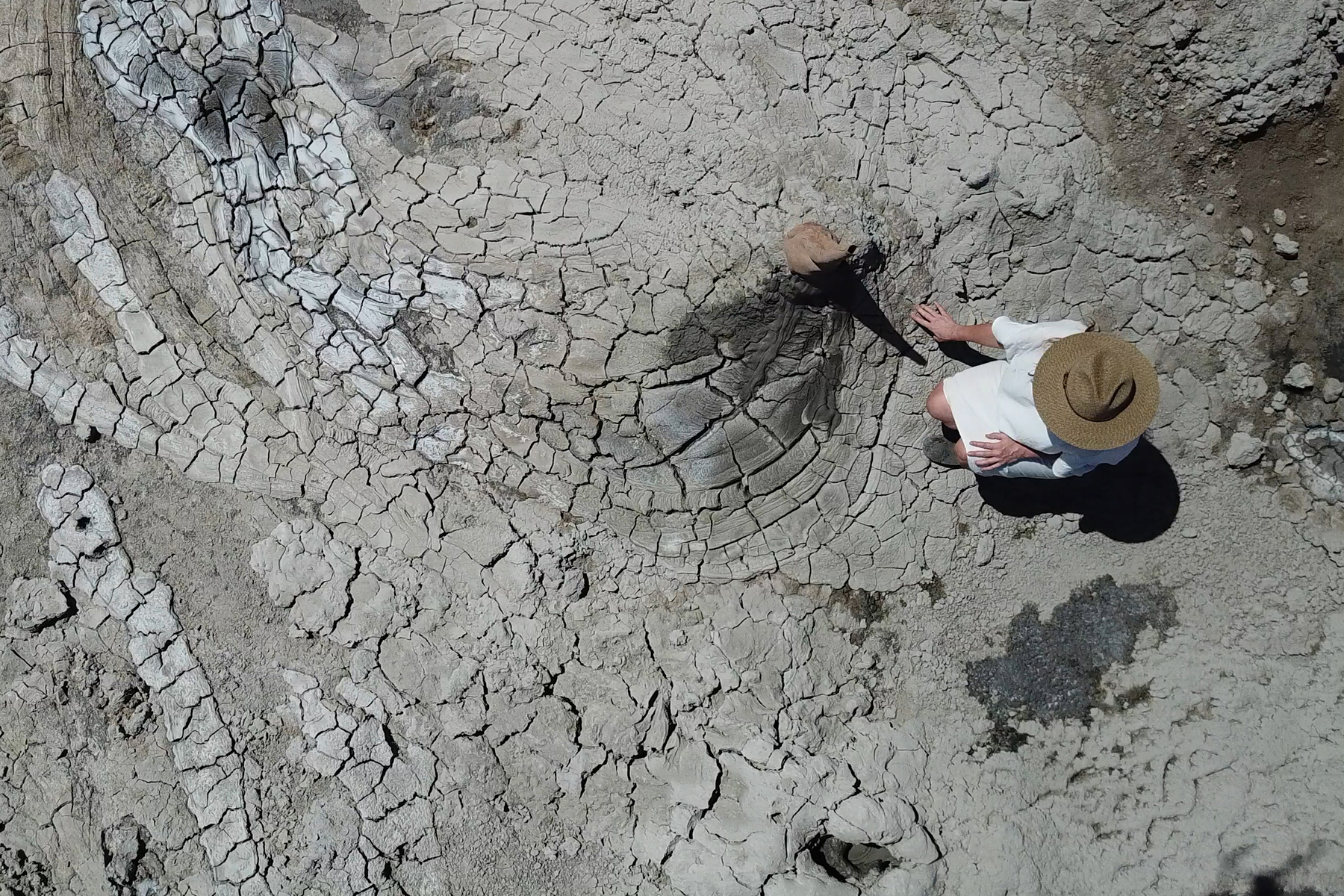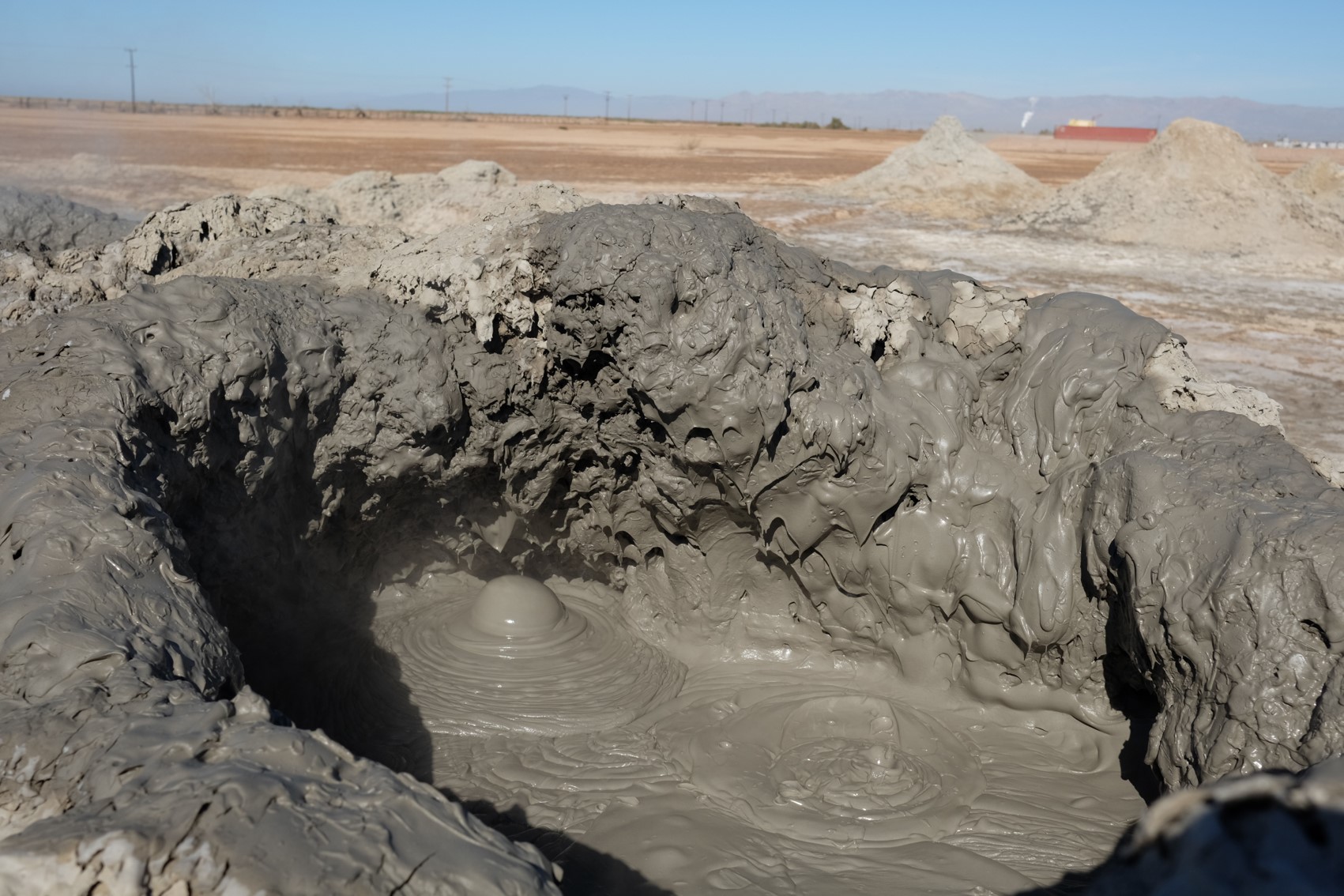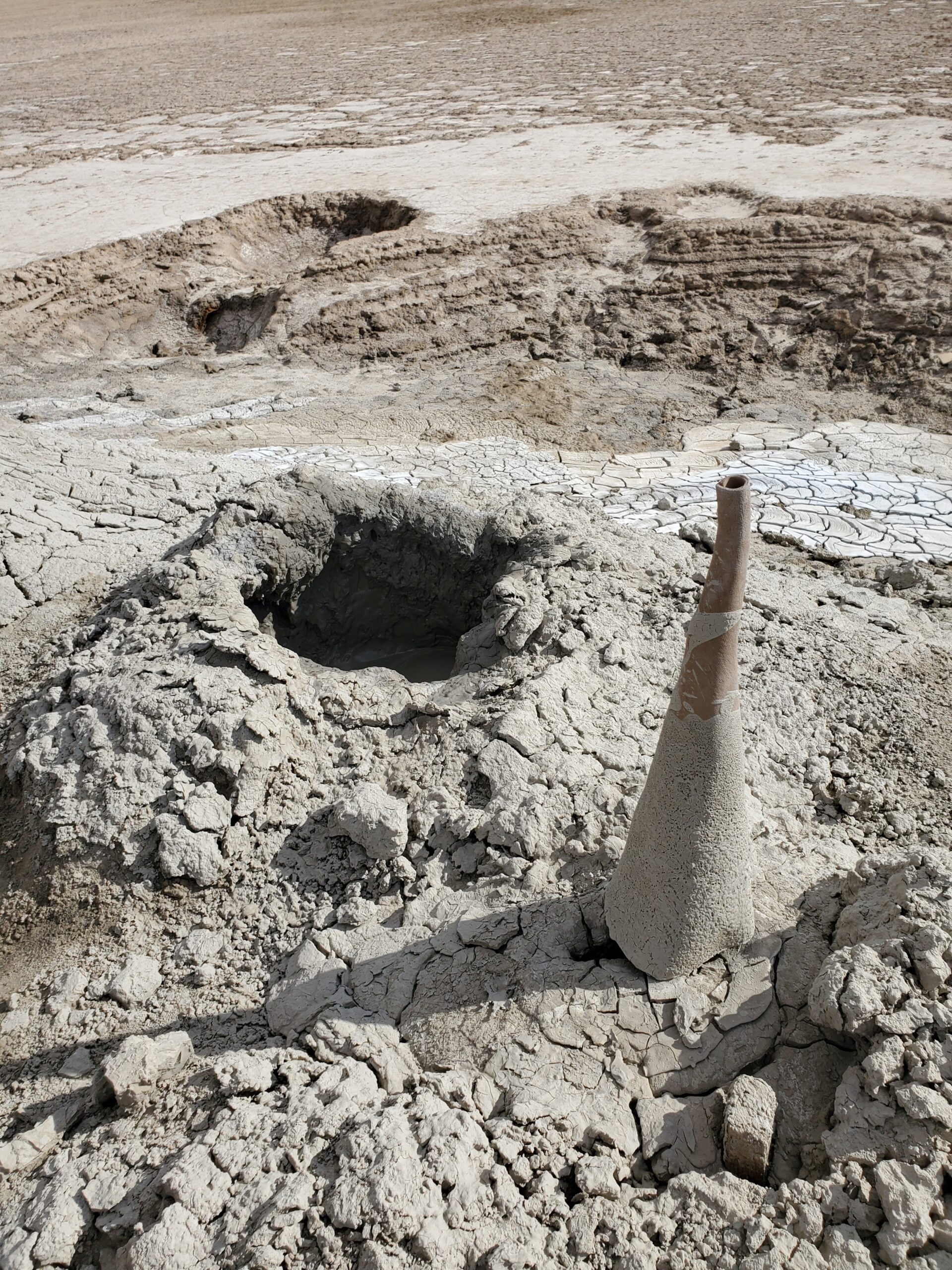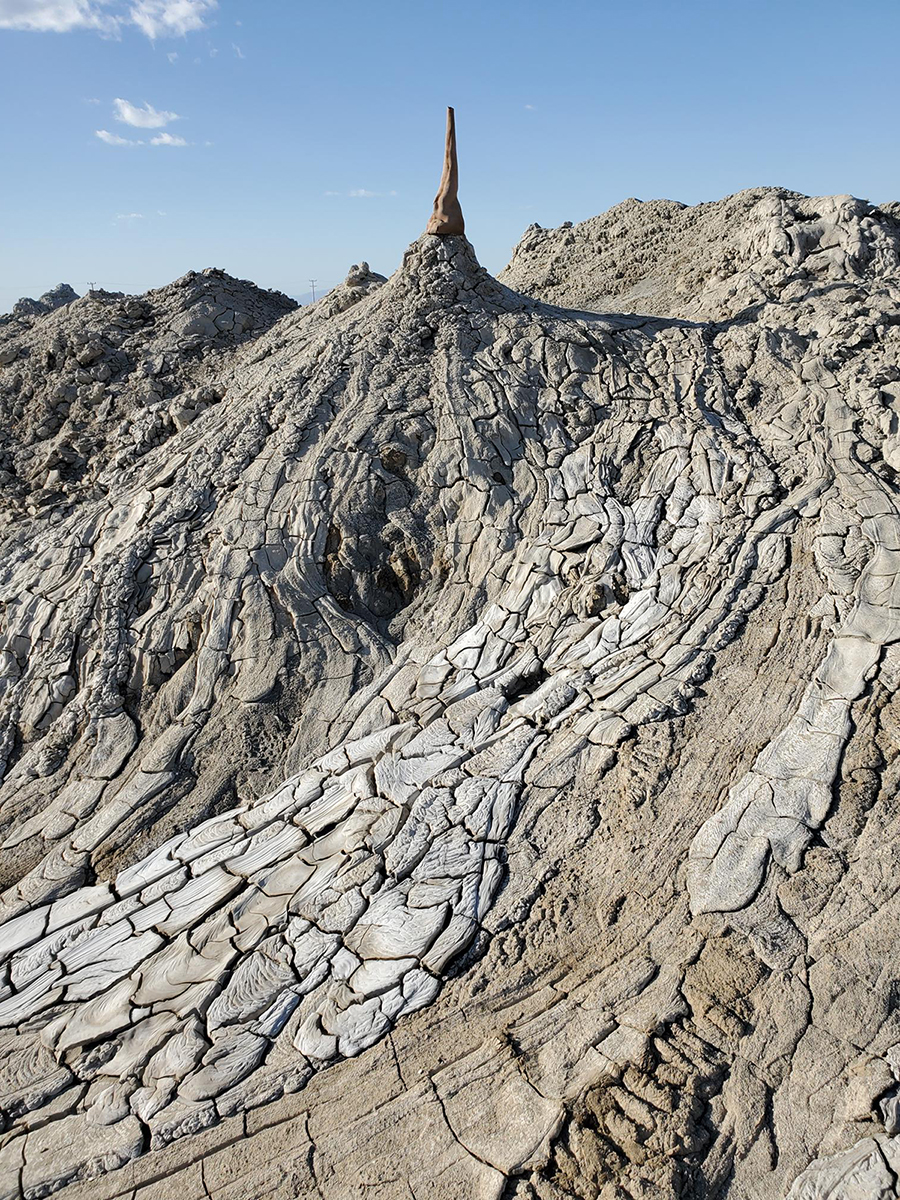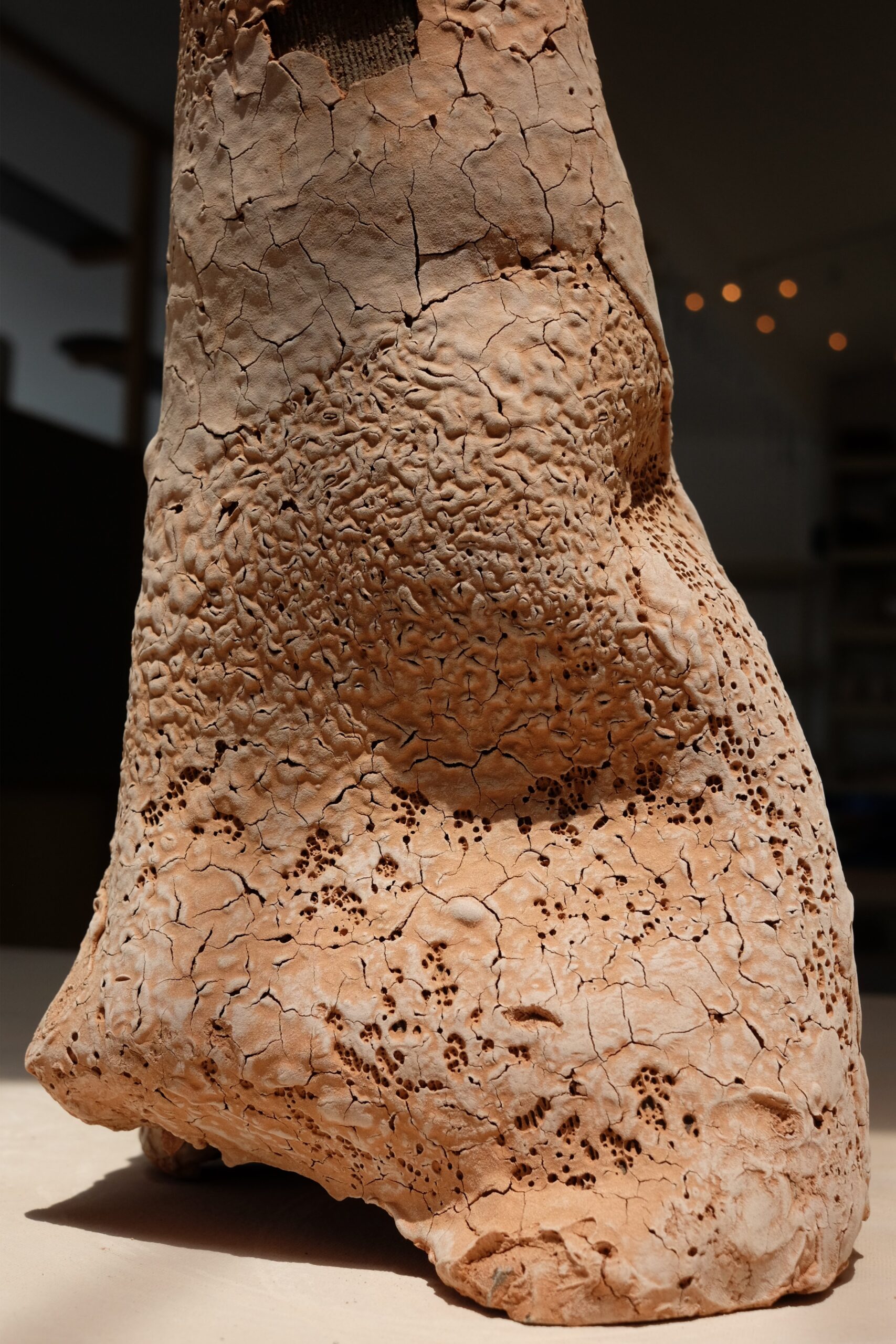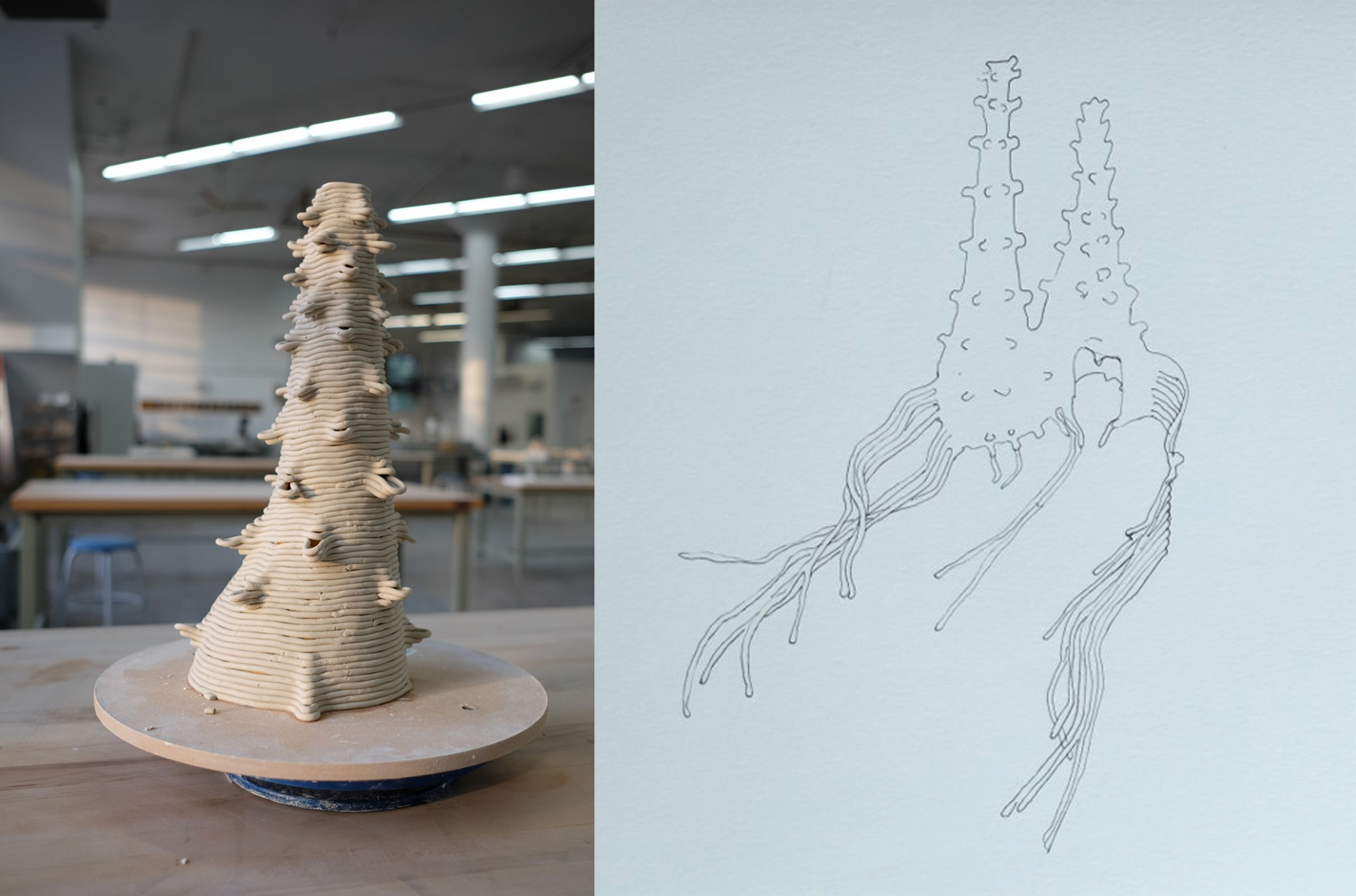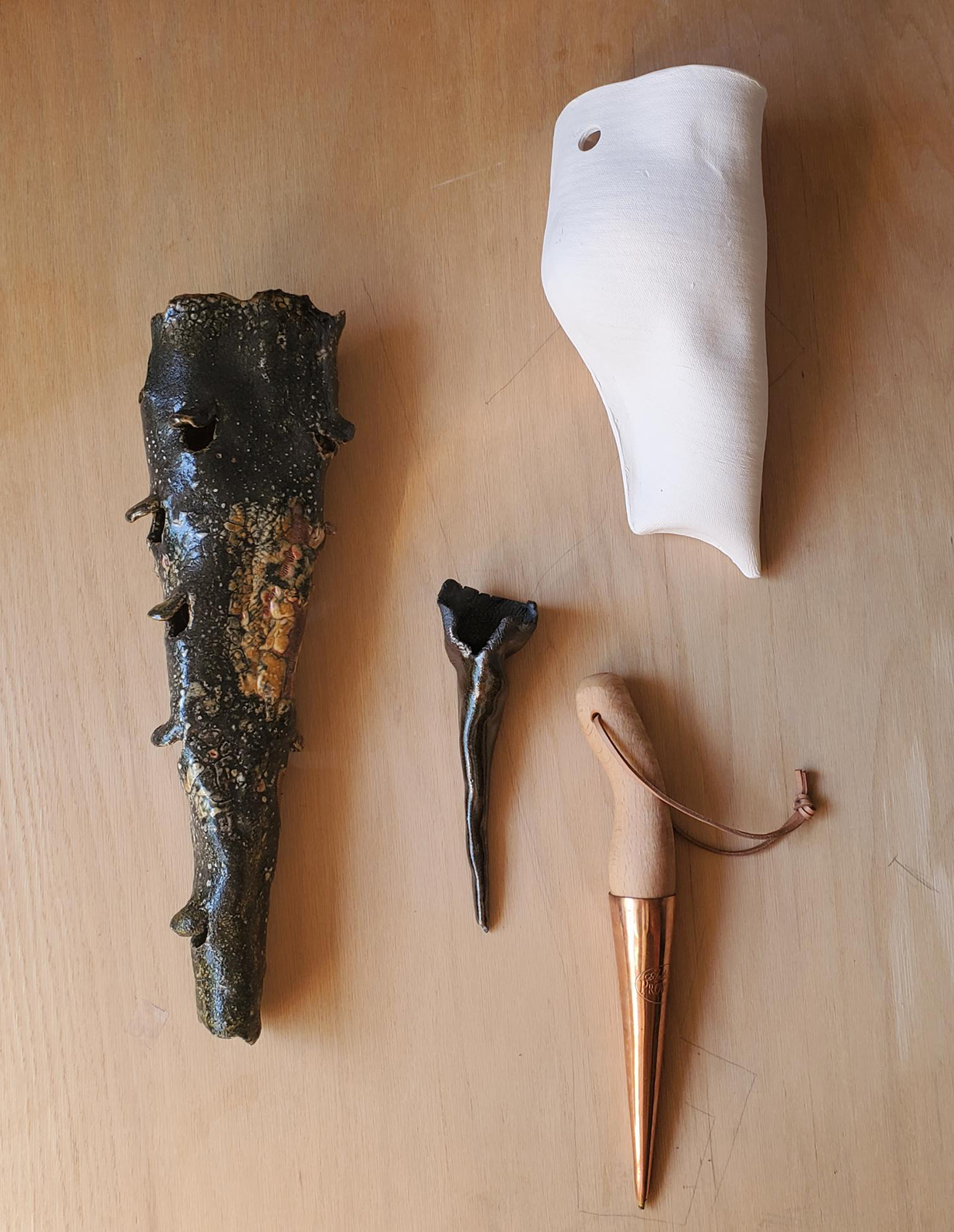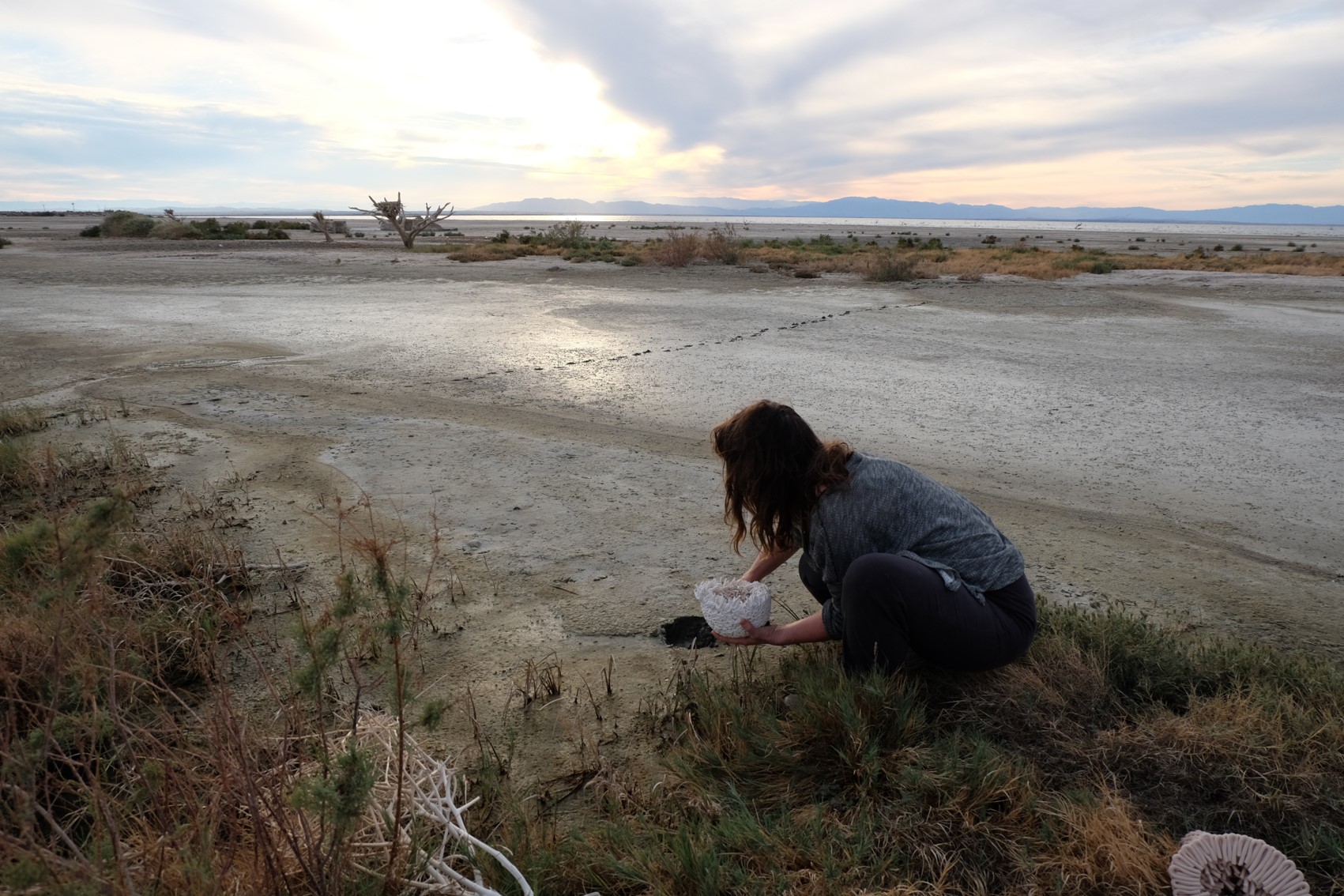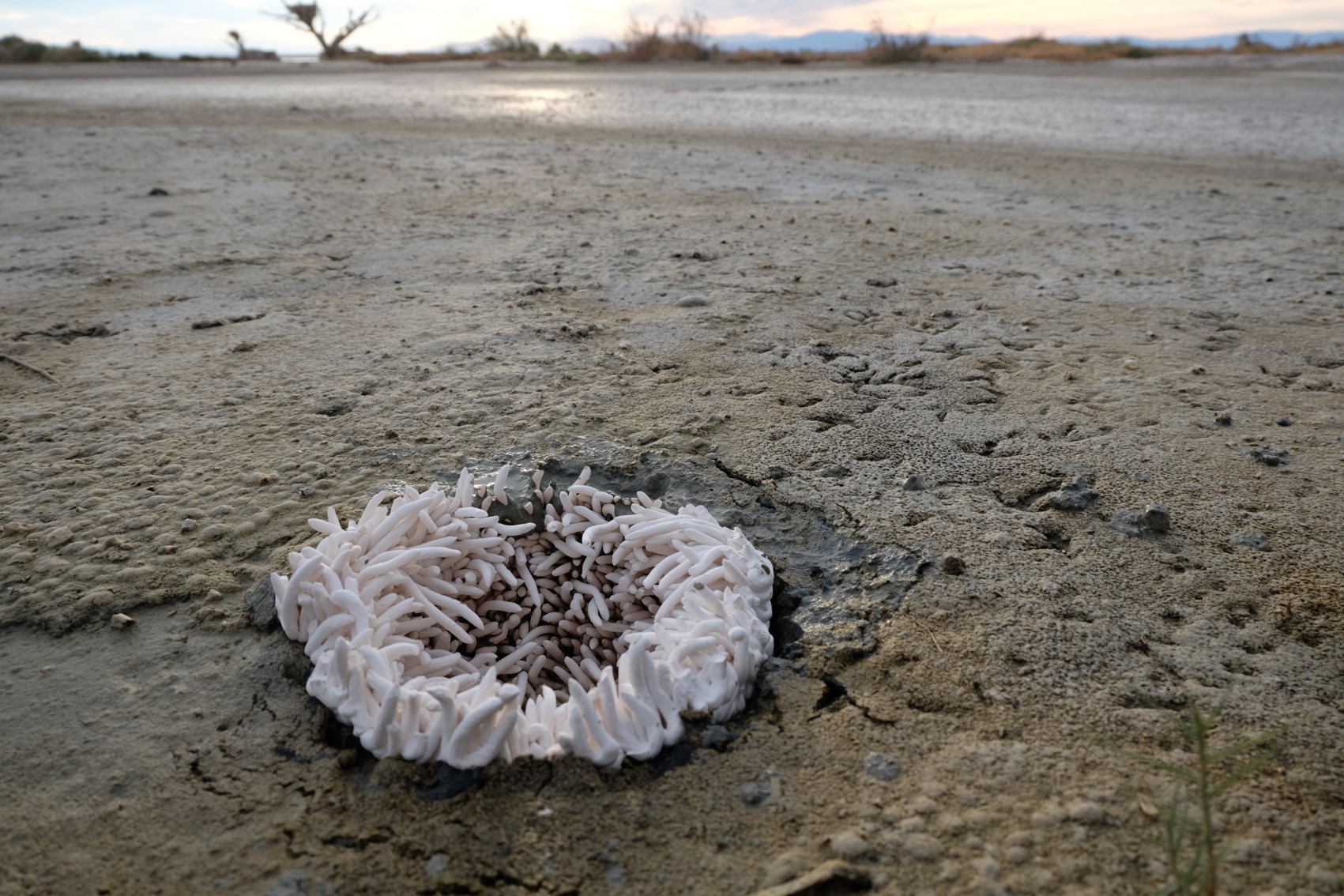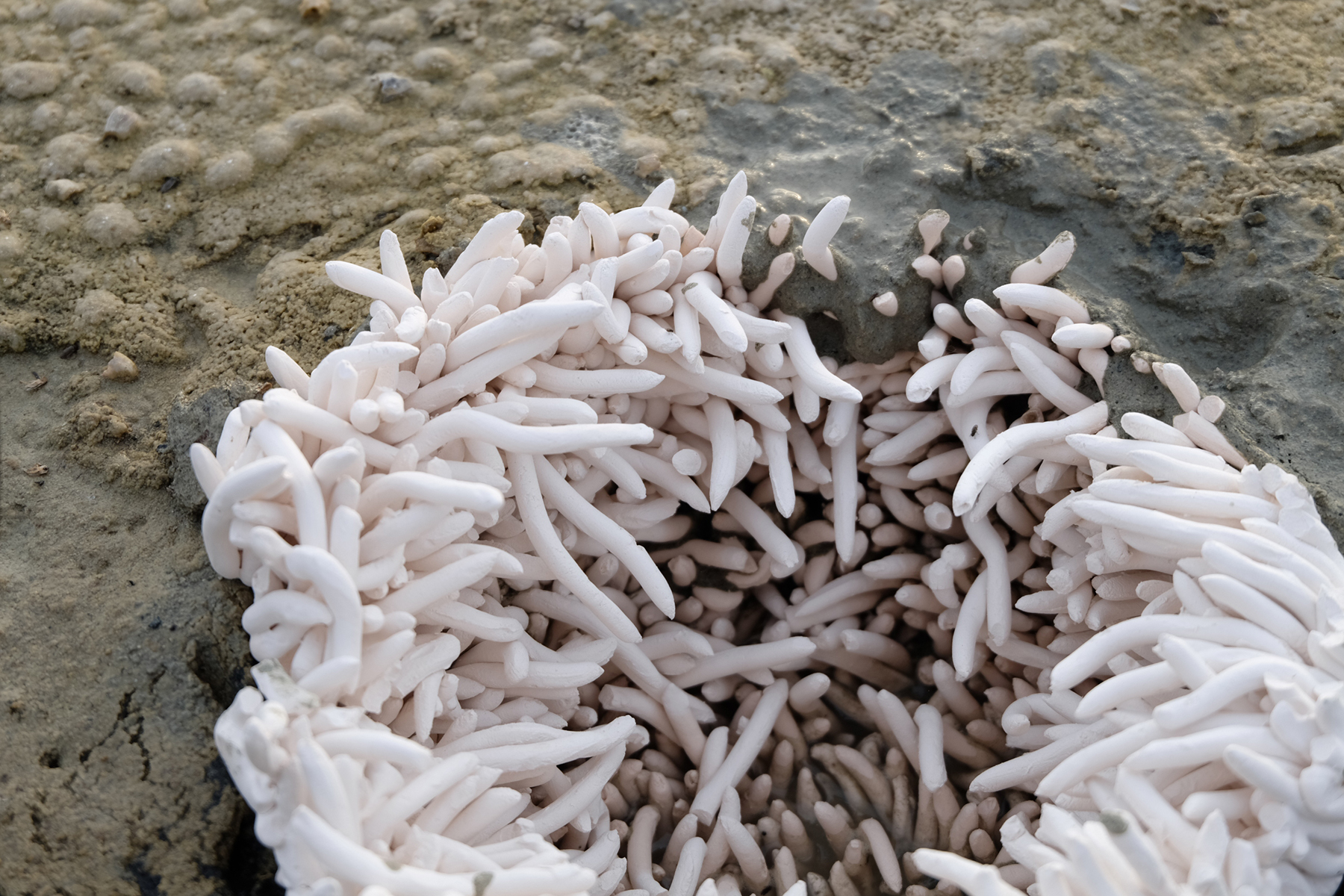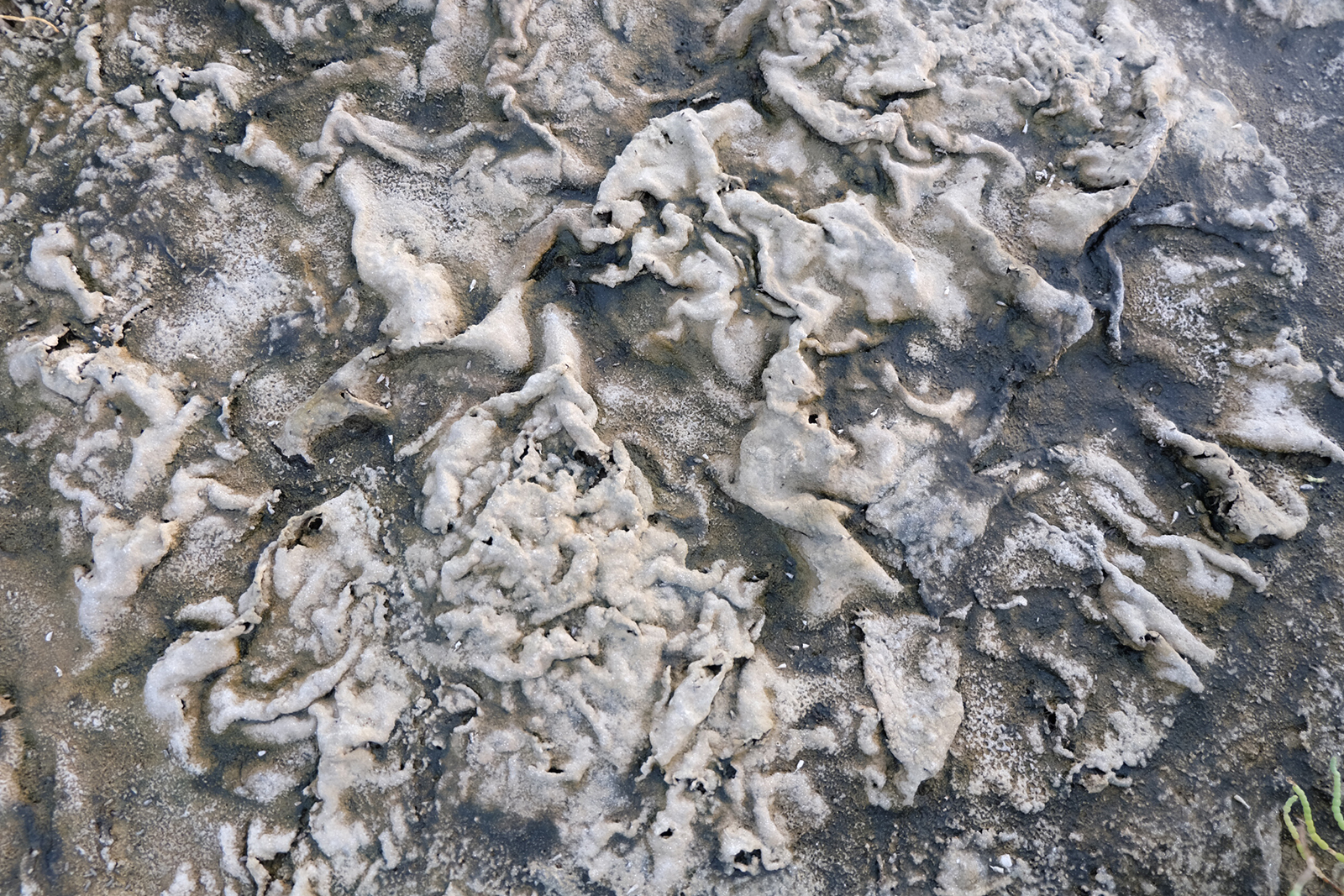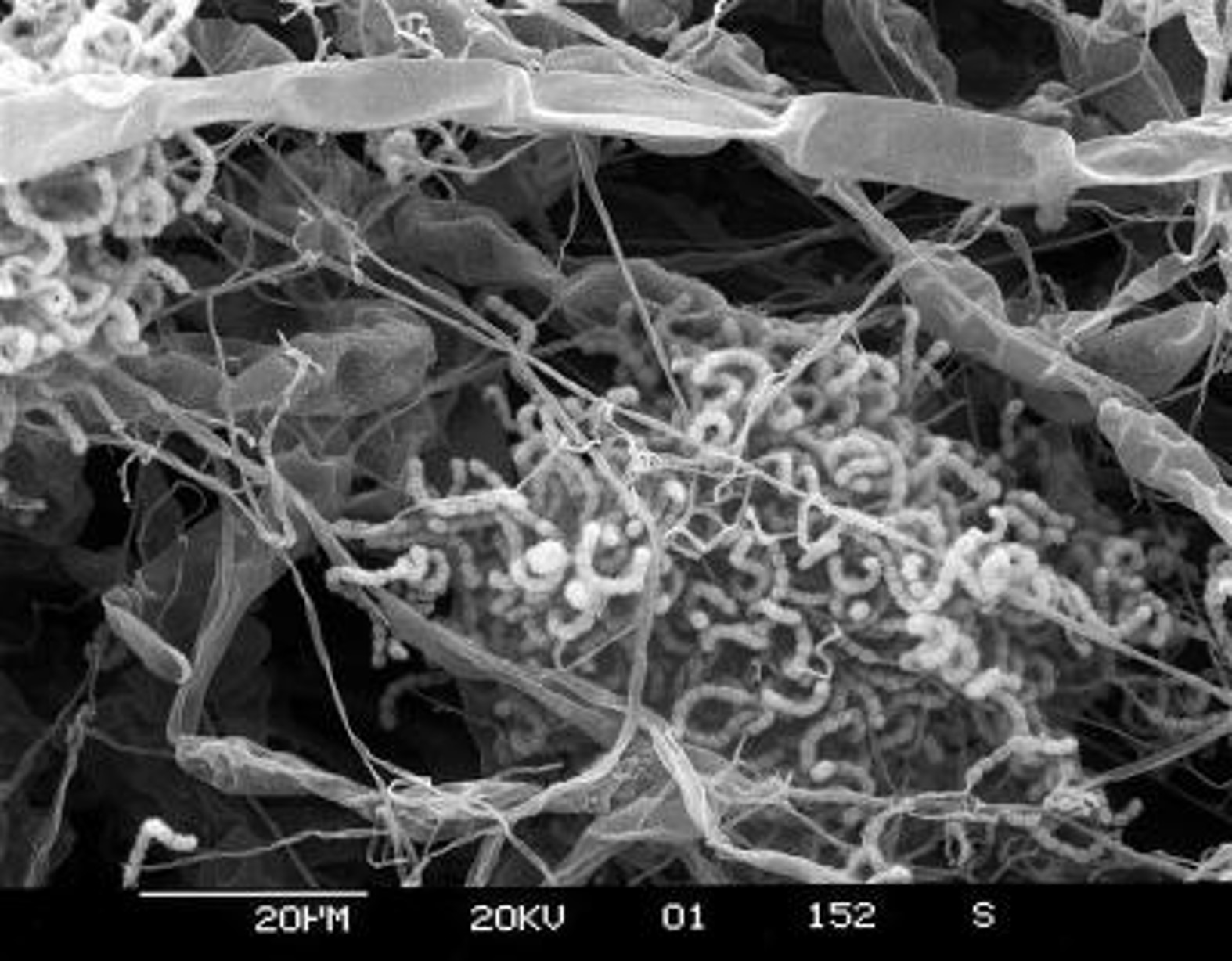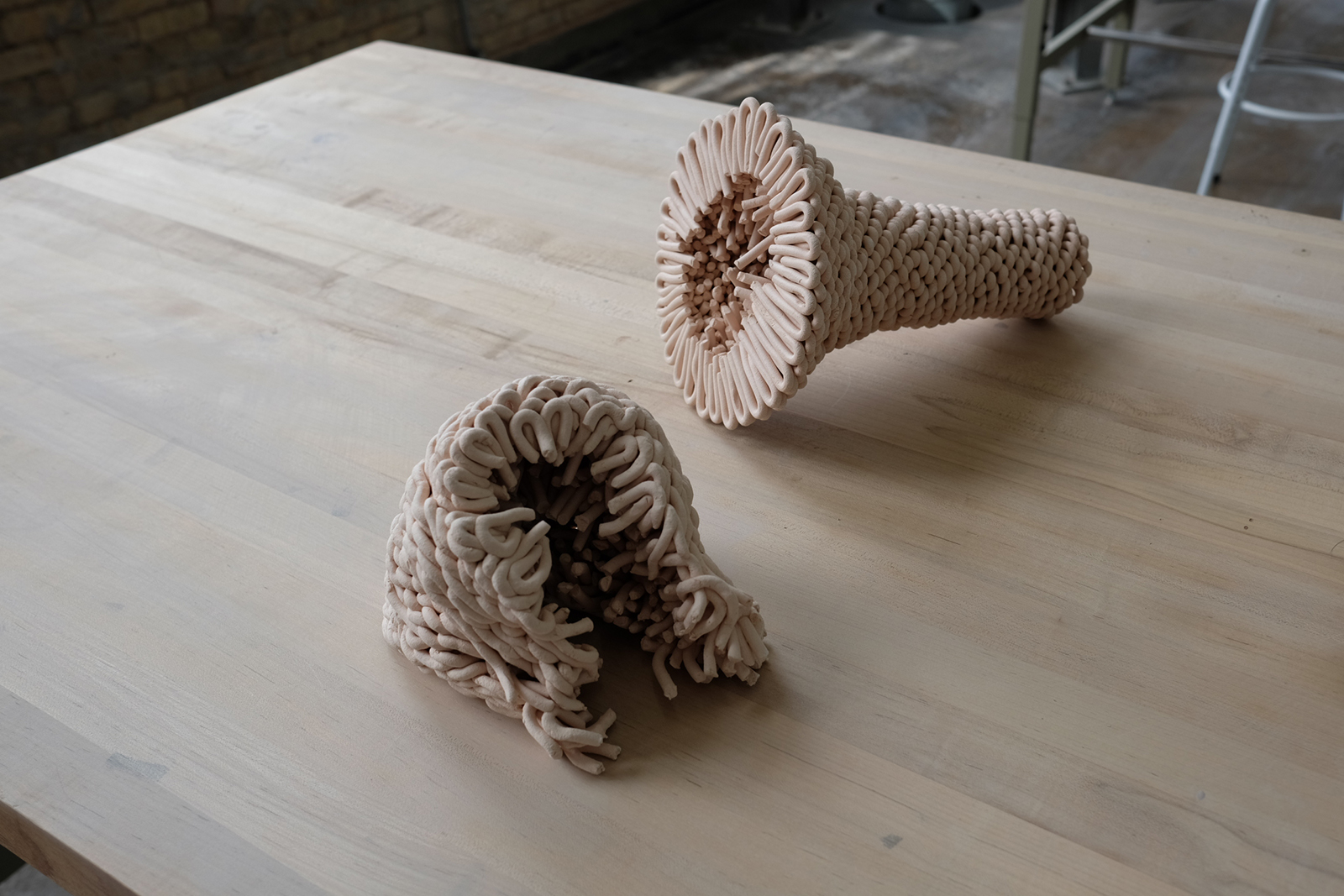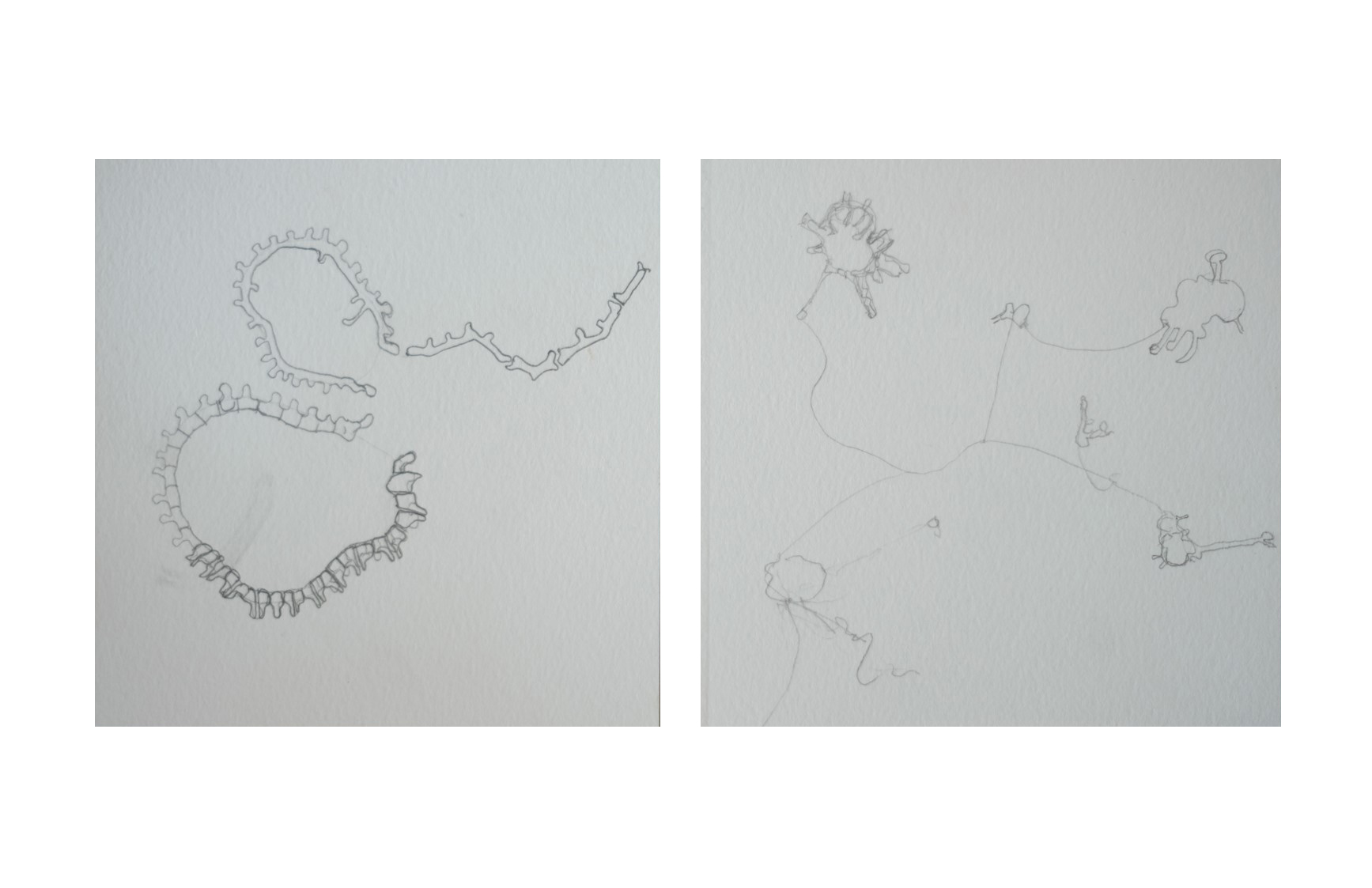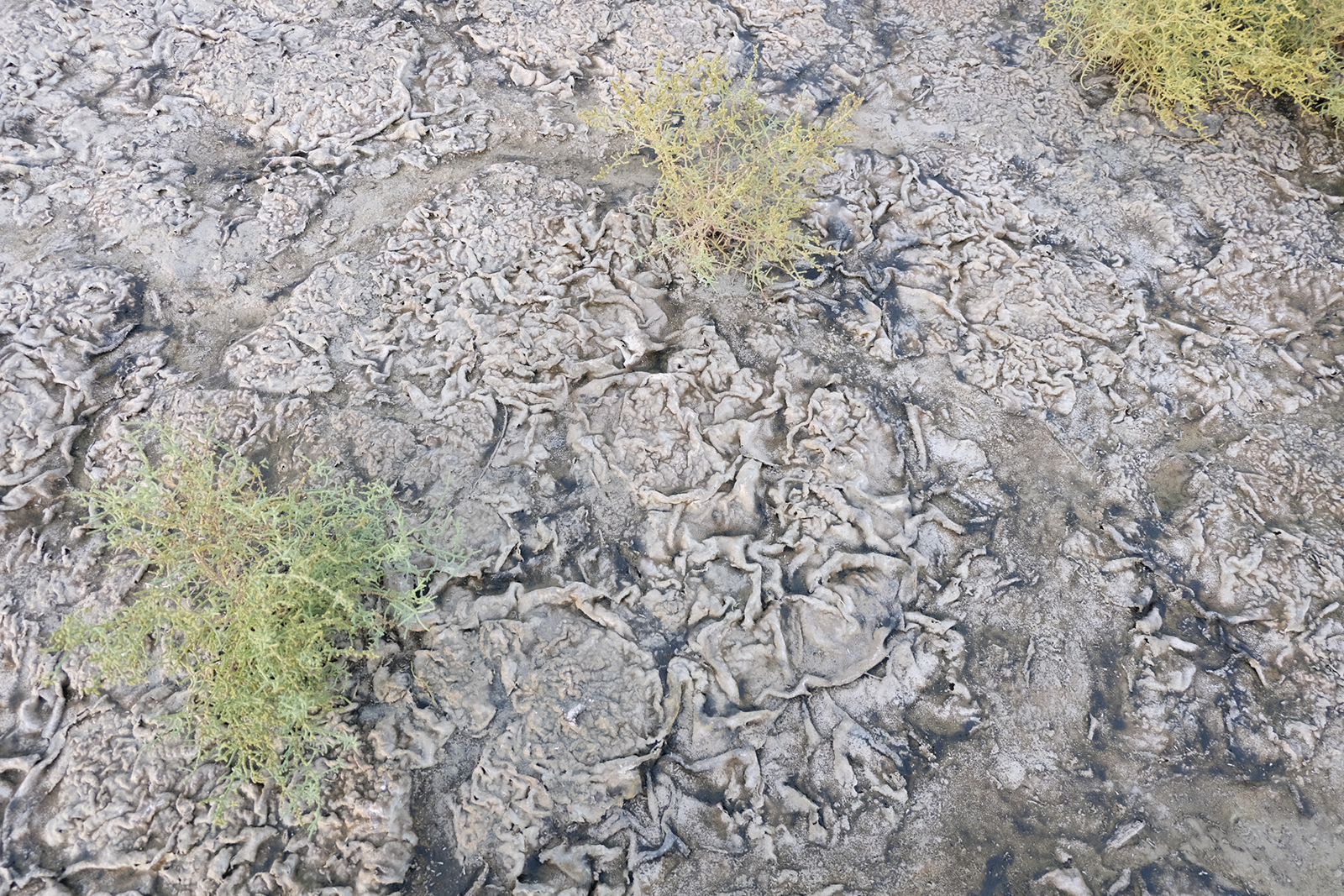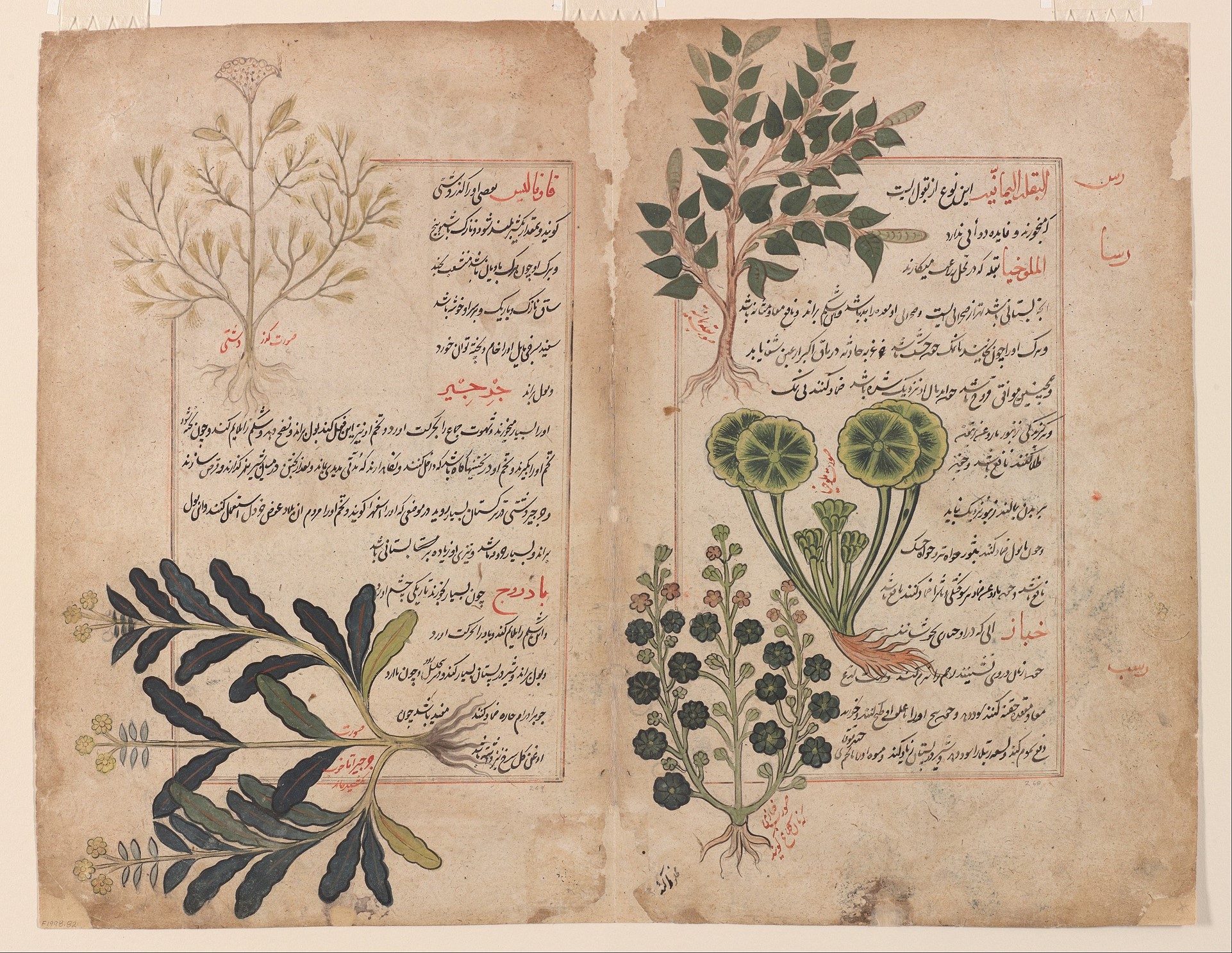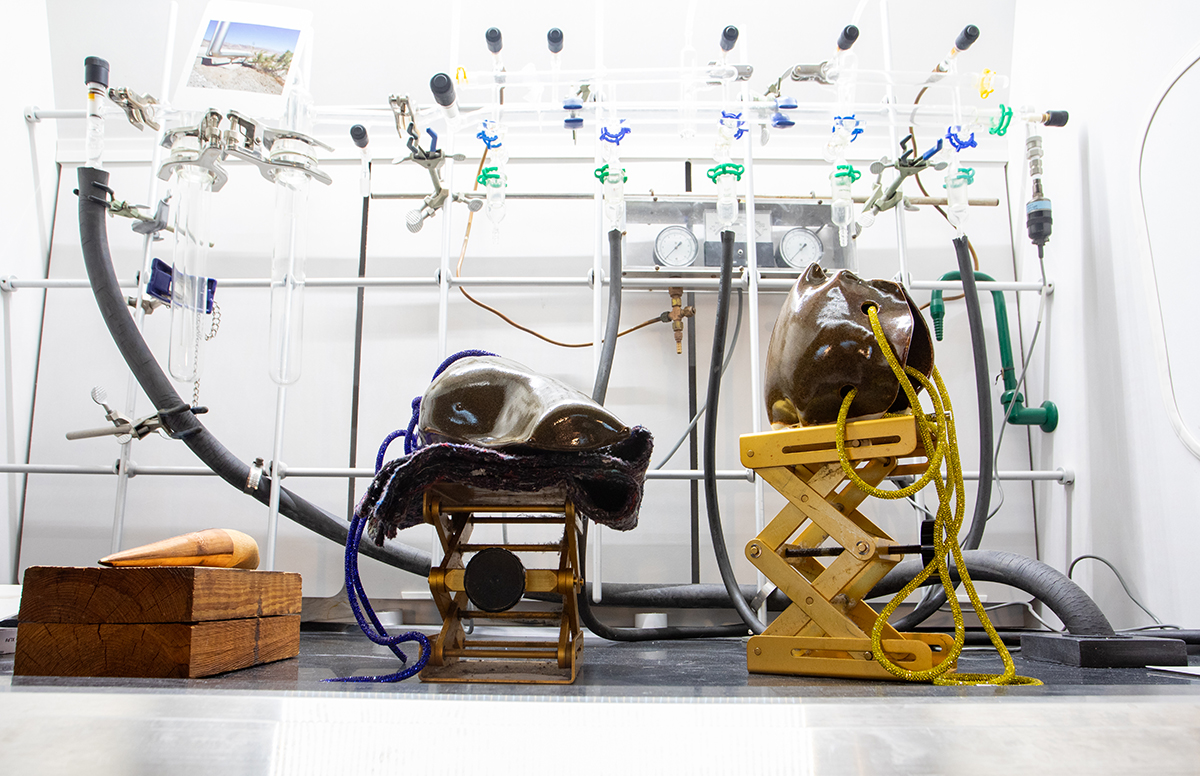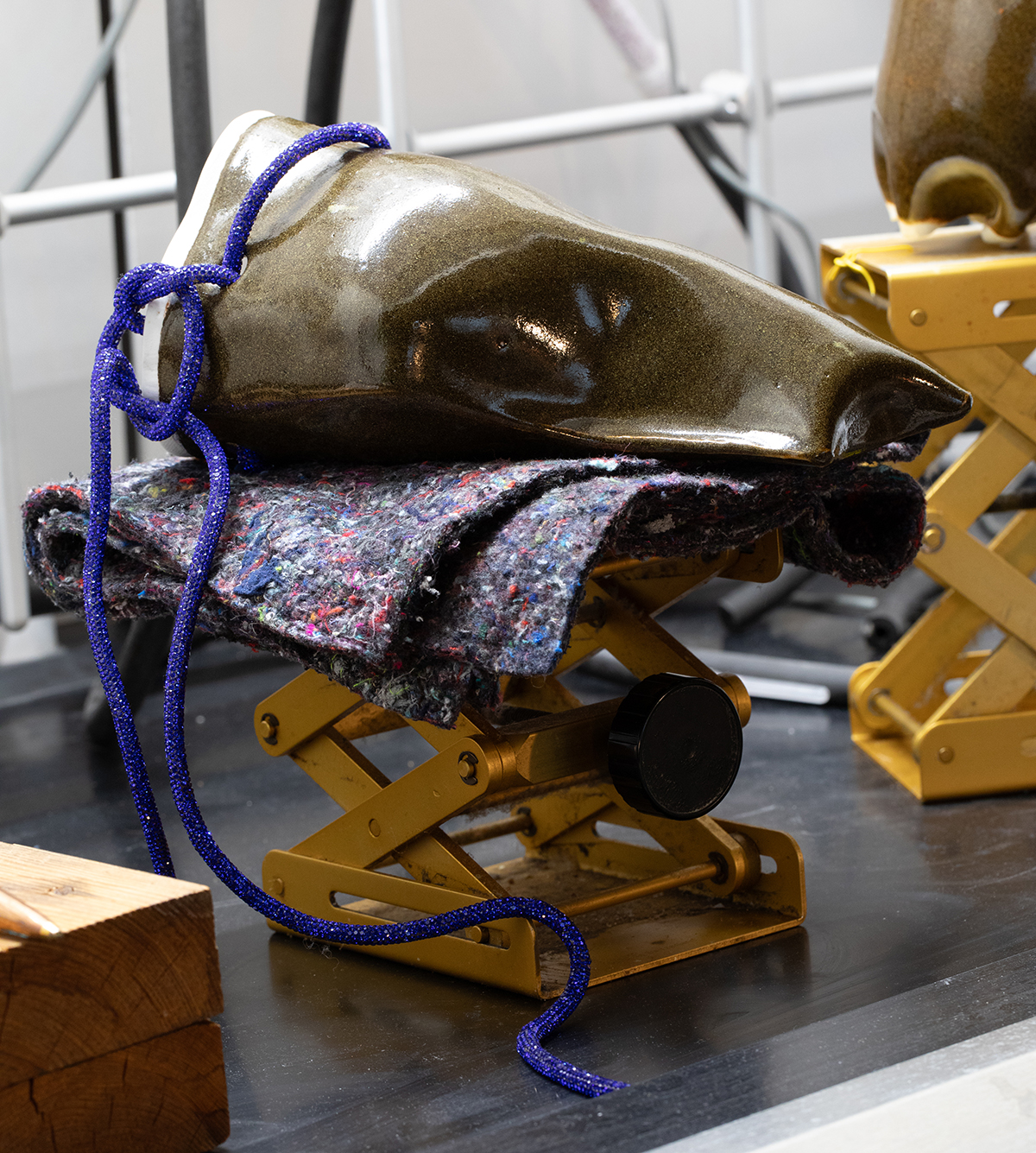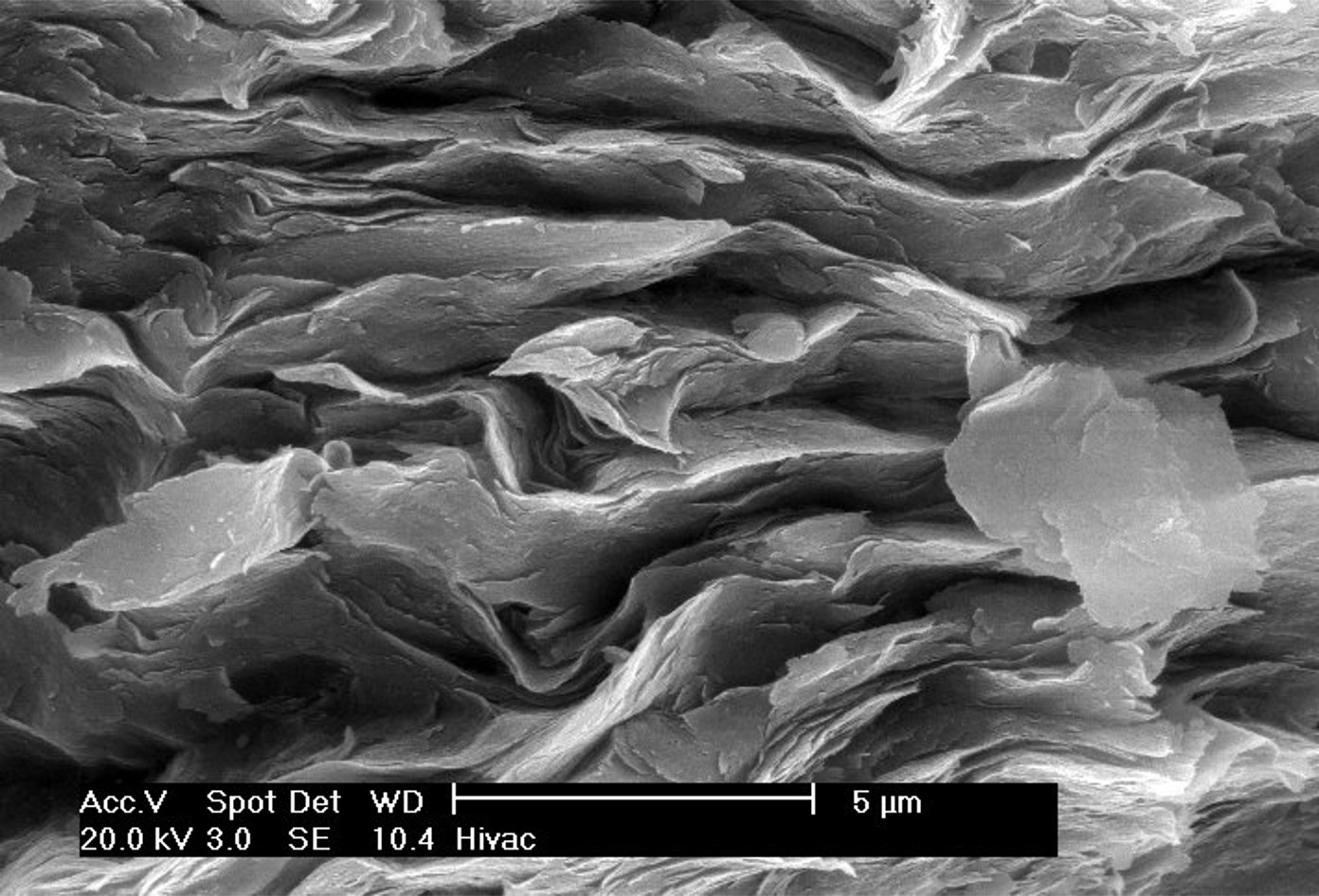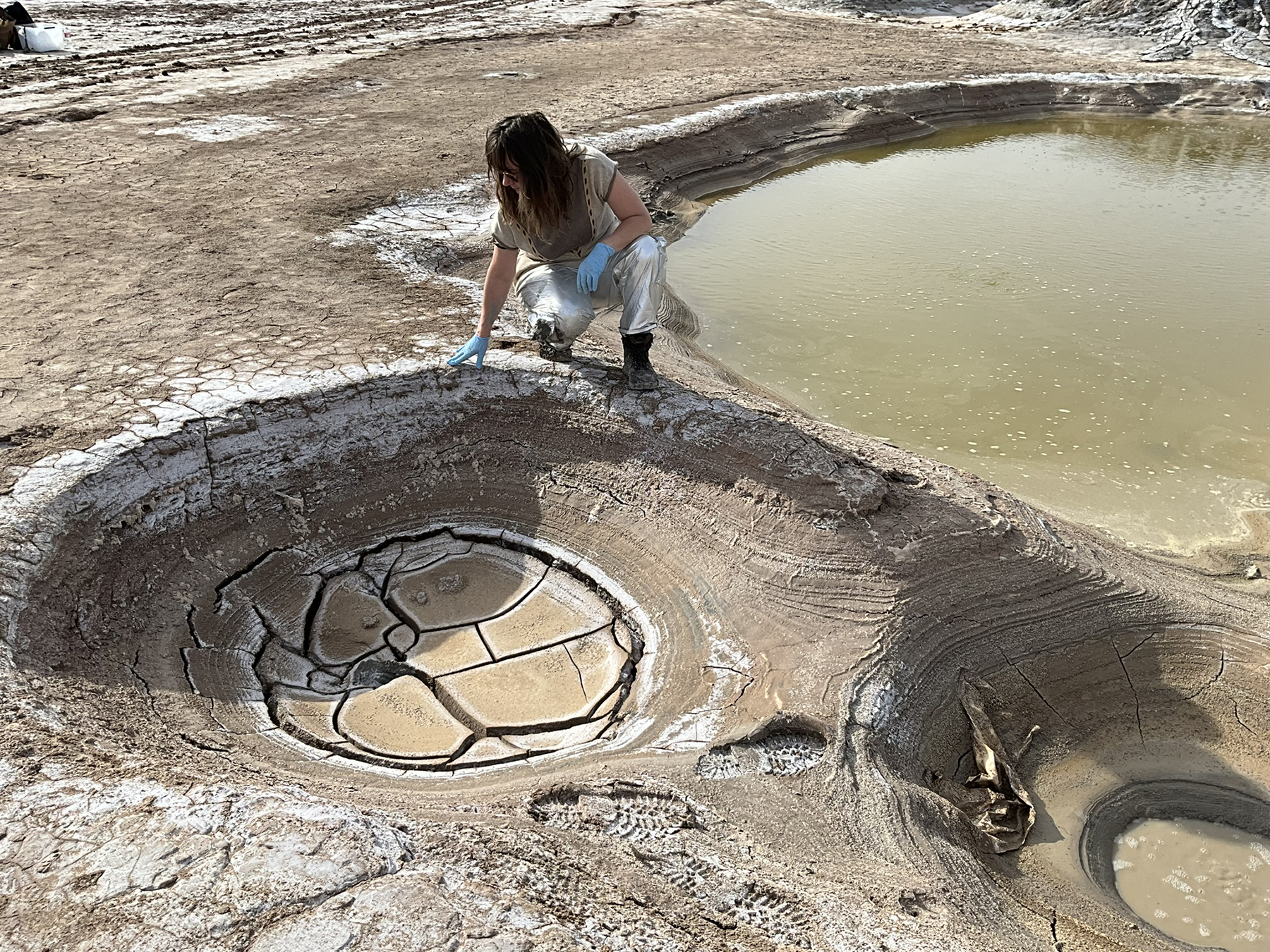Geological Finials, Microbial Refugia, vessels and tools
Exhibited as part of the Aperiodic Table of the Anthropocene exhibition at the tranSci Lab for Real World Chemistry, University of Virginia, 2024.
These fictitious tools and objects belong to a future scenario of Lithium Valley – a transformation of Imperial Valley and of Salton Sea, brought by the discovery of what could be one of the world’s largest lithium deposits. The various artefacts and their implied practices propose an alternate way of relating to the raw materials, tailings and spoils of lithium extraction – through trying to assist the bio-geo-chemical desires of post-extraction landscapes. Part technological, part folkloric and ritualistic in their deployment – the artefacts can be thought of as cross-over objects between human and the non-human: assisting landscape formation through microbial mats, inoculating soil building bacteria, and seeding extremophiles which are able to thrive in these altered landscapes.
The folklore of geological imaginaries.
But there are also rituals and celebratory processionals along the new sediments of the drying sea, acts of burying the vessels in fragile new grounds, placing celebratory “finials” on the mouths of gryphons and fumaroles to mark the tips of the vast geological sections which are the source of the lithium laden mud.
These landscape tools are themselves constructed using the geothermal mud-slurry for ceramic material – the future by-products, tailings and overburdens. This is also an exploration of the emerging materiality and aesthetics of these key energy transition substances, the colors and characteristics of terracotta and ceramic glazes which are endemic to future lithium extraction sites. But there are other uses and meanings – references to the traditional ollas used for irrigation by the indigenous peoples of the Sonoran Desert – as well as rhytons – libation drinking vessels of ancient Greece, Eurasia and South America.
New Geological Commons
Altered landscapes and disturbed grounds, post extraction slag heaps and spillages: toxic, problematic sites of altered soil chemistries – these landscapes of the Anthropocene are often portrayed in terms of loss where a natural condition is disturbed and harmed, reemerging as wasteland: un-natural, un-picturesque and potentially dangerous.
Yet these might be the very sites of a future emergence of new, darker natures, geologic and biochemical processes of much larger timeframes and lesser understood, often invisible microbial or ruderal ecologies. In that sense, we must construct new imaginaries, mythologies, customs, and practices which are able to span such timescales.
Sustaining this new kind of Commons – a stewardship of non-human desires and agencies – would mean moving beyond what is of “use” to us. What Future Folklores – objects, tools, practices, costumes and narratives would emerge? How can even mineral worlds, bacterial worlds, or bio-geo-chemical processes be part of a human understanding. Objects that exist in human time and geologic time of a landscape, simultaneously. A polychronous understanding of time exists in certain beliefs, where landscapes, rocks and minerals acquire an agency, an animism.
Relics from Salton Sea circa 2037:
- Geological Finial
- Microbial Refugium
- Ceramic seed pouches/ celebratory rhytons made with lithium clay glaze
- salicornia seeds
- Copper Dibber
- Silt Witch Kiss Relic
